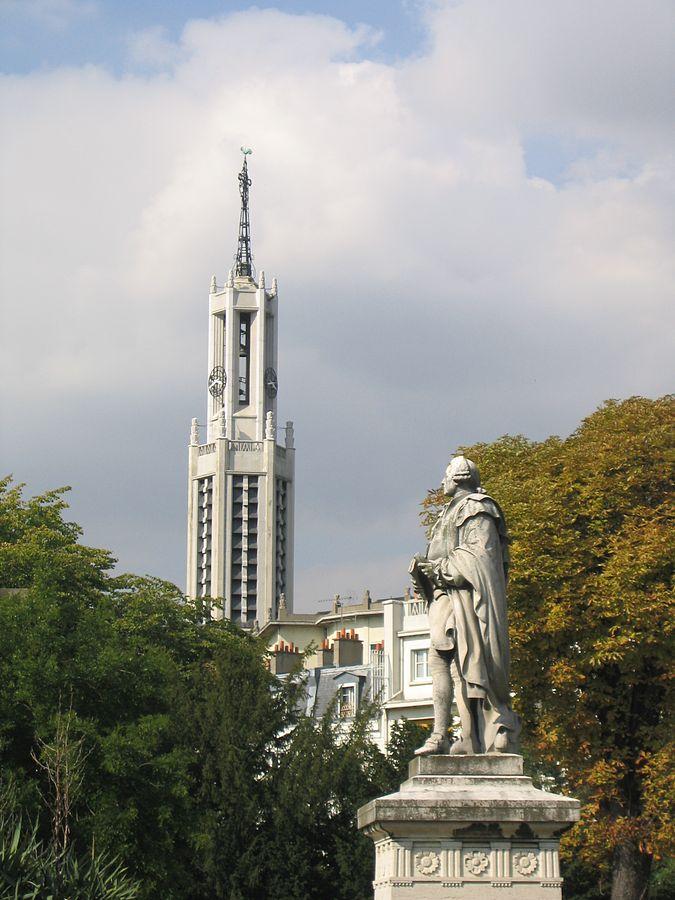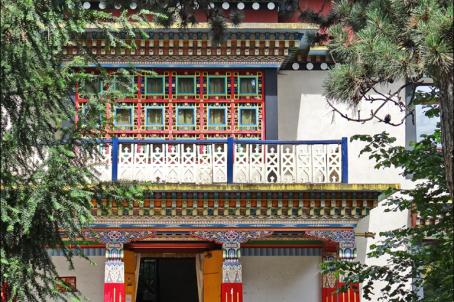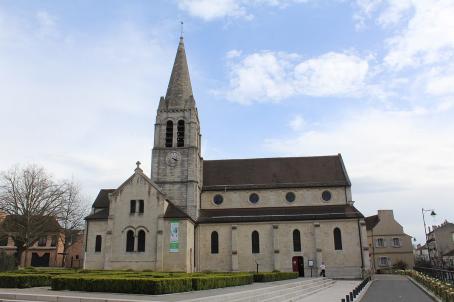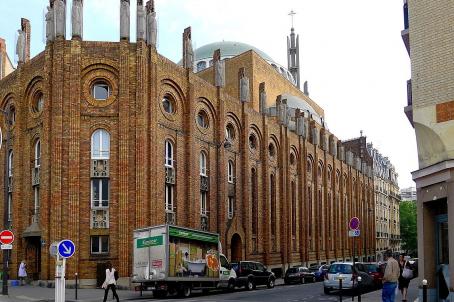Church of Sainte-Agnès
Built at the beginning of the 20th century, the church was classified as a Historic Monument in 1984. The project was particularly interesting because it was supported by many patrons and artists. The octagonal bell tower is particularly impressive: it dominates the surroundings with its 53 m high. The style of the building, in reinforced cement, is a witness to the new rationalist school of the 1930s, represented here by the architects Marc Brillaud de Laujardière and Raymond Puthomme. The church houses painted wooden panels, art deco style, glass canopies by Max Ingrand, frescoes by Paule and Max Ingrand, as well as a monumental statue of Saint Agnes.
About this building
The building was built from 1932 to 1933 by the architects Marc Brillaud de Laujardière, winner of the Prix de Rome in 1920, and Raymond Puthomme who were inspired by the church of Notre-Dame du Raincy. It was classified as a historical monument in 1984. They achieved the feat of transforming a cramped and enclosed land with unfavourable geometries into a luminous architectural setting in the Art Deco style, with a perfect mastery of the new reinforced concrete techniques. Another feat is the symbiotic work of the architects and artists to make this ensemble coherent, imbued with modernity in art and faith and marked with the stamp of the renewal of Christian iconography.






